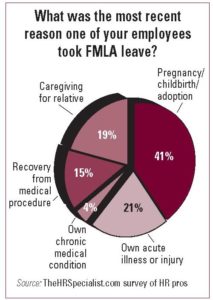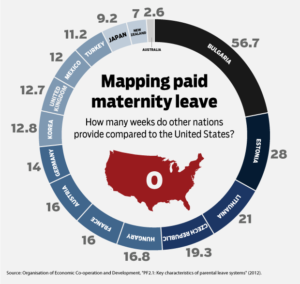By: Robert Avsec, Executive Fire Officer
I recently read a piece shared by a colleague on LinkedIn that got my attention as well it should yours.
Lawsuit: Wegmans Told Employee to “Suck It Up” Instead of Granting FMLA
The author of the piece provides a very good summation for how the situation should have been handled: Once an employee asks for FMLA, protections kick in. Remember that.
So, how much do you know about FMLA (Family Medical Leave Act) as an employee? As a supervisor? If you’ve answered, “Not much” in either capacity, there’s a potential for real trouble “down the road.”
Basic FMLA
First, it is not the Family Medical Leave Act. It’s the Family and Medical Leave Act (emphasis added). When you delve into the complete Act, you quickly see that the FMLA applies to medical leave issues as well as issues connected with starting and maintaining families.
First enacted into federal law in 1993 and administered by the Wage and Hour Division (WHD) at the Department of Labor, the FMLA requires employers who have 50 or more employees to provide up to 12 weeks of unpaid, job-protected leave to eligible employees. That leave can be used for many different family-related or medical related issues such as, but not limited to, the birth or adoption of a child or for the serious illness of the employee or a spouse, child or parent.
“Takeaway” #1 for this short piece on the FMLA is that a blog, any blog, is not your best source of information regarding the FMLA and its application by employers and its use by employees.
“Takeaway” #2 is this: If you’re an employee who needs to take leave from your job for any medical-related issue or family-related issue, you should check out the WHD’s publication, Fact Sheet #28: The Family and Medical Leave Act.
“Takeaway” #3 is this: If you’re anywhere in management for an employer that has 50 or more employees (public or private sector) and you receive an inquiry or request from one of your direct reports about taking leave for an upcoming medical procedure or after a medical procedure or for any family-related issue, you must check out the WHD’s publication, Fact Sheet #28: The Family and Medical Leave Act.
(It’s always management’s responsibility to be informed and educated about it’s own policies and procedures and those state and federal laws, like the FMLA, that can have serious negative consequences if not adhered to according to the “letter of the law.”).
See Related: Final Rule to Revise the Definition of “Spouse” Under the FMLA
Break Time for Nursing Mothers
Section 7 of the Fair Labor Standards Act (FLSA) requires employers to provide reasonable break time for an employee to express breast milk (use a breast pump to collect milk) for her nursing child for one year after the child’s birth each time such employee has the physiological need [Emphasis added] to express the milk. In the following case, moving through the courts in Illinois, it appears that some people in the Chicago Fire Department’s management didn’t “get the memo.”
Chicago Fire’s Nursing Mother Case Moves Forward
Employers are also required to provide a place, other than a bathroom, that is shielded from view and free from intrusion from coworkers and the public, which may be used by an employee to express breast milk. The break time requirement became effective when the Affordable Care Act was signed into law on March 23, 2010. The WHD’s publication, Fact Sheet #73 Break Time for Nursing Mothers under the FLSA and the Frequently Asked Questions (FAQs) provide basic information about the law.
My fire service colleague and attorney, Curt Verone, had the following to say in a piece he wrote for his blog, Fire Law, in October 2017:
This is an area where fire officers – including company officers – desperately need training. The stereotypical paramilitary approach to handling non-conformists can easily lead the department into an avoidable lawsuit with pregnant and nursing firefighters.
Few firefighters have had the opportunity to watch a predecessor properly handle a case like this. Many departments are dealing with pregnant and nursing firefighters for the first time and find out the hard way that a heavy-handed response by untrained officers is a recipe for disaster!
Pregnant and nursing firefighters represent one of those high-risk low-frequency areas where a clear policy – and training on the policy – is warranted. Remember the Gordon Graham – Lexipol motto: If it is predicable it is preventable.
Read More: Fire Law—Meeting the Workplace Needs of Nursing Mothers
For a woman’s perspective on this issue, check out this piece from another fire service colleague, Angie Hughes, a Captain with the Baltimore County (MD) Fire Department, Is this a problem?
In that 2015 article (Isn’t it crazy this Captain Hughes’ article is still relevant today?), she makes several very significant points in the  article’s Family Leave section. Check these quotes out:
article’s Family Leave section. Check these quotes out:
Your department has hired a fantastic female firefighter. What plans do you have for her if she becomes pregnant? The leadership should address this question before it happens. The Family and Medical Leave Act provides federal mandates for use of leave for the birth of a baby, but that may not be enough.
Captain Hughes went on to say, “A department that wants to be diverse should look at the current policies and procedures and rework the ones that will accommodate a diverse organization. It is important to have a good pregnancy and parenting policy in place, and it is a fantastic recruitment tool, which will make your department attractive.”
Sounds like good advice, no?
 Fire & EMS Leader Pro The job of old firefighters is to teach young firefighters how to become old firefighters!
Fire & EMS Leader Pro The job of old firefighters is to teach young firefighters how to become old firefighters!